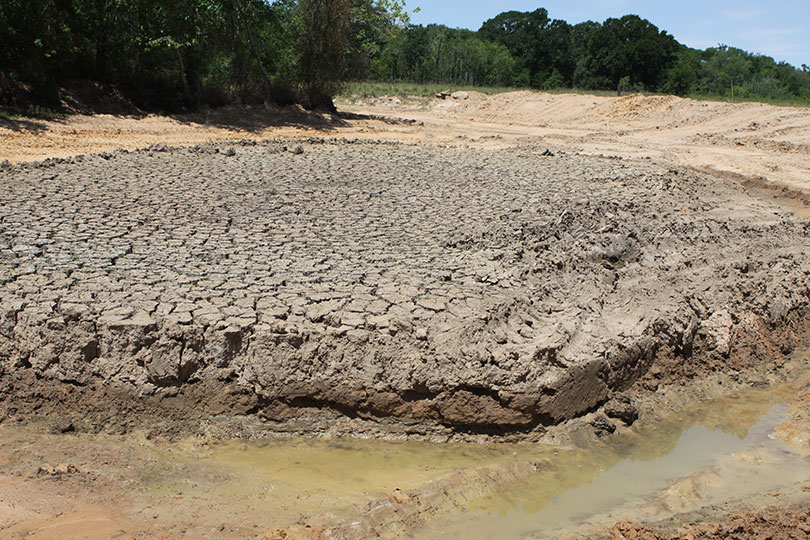By Tom Nicolette
Senior Network Producer
With the ongoing Texas drought comes an opportunity for improvements on farm and ranchland.
“As we talk about protecting the real estate values of ranches, one of the things we saw a lot of in the 2011 drought was many people took the opportunity to pull the sludge out of their ponds,” said Tyler Jacobs, broker/partner with Hall and Hall, LLP in College Station.
“Their ponds, their tanks were pretty low any way. The lower that tank got, the sludge and silt in the bottom of the tank got to be a problem for the livestock, water clarity and mud issues,” Jacobs said in an interview with Texas Farm Bureau Radio Network. “So, if you’re not going to have the livestock there because of the drought, you can pump out that tank.”
Jacobs noted that it’s an opportune time to consider digging another tank, if needed.
Improvements to drainage systems and roads in and around ranchland can also be addressed during times of drought.
“There’s always places that are a thorn in our side that reduce productivity or are hard to manage because they are drained poorly,” he said. “So, a drought is the perfect opportunity to do that. Obviously, you want to check with your local, state and federal regulations to make sure you are not overstepping (anyone’s authority).”
Major road repairs to rural property also can be accomplished at this time.
“When it comes to building crossings and drainage structures on your roads, the best time to do it is when it is really dry. Make sure the material is well-compacted, which helps culverts. If the road is dry, you will probably do less damage to it when bringing materials in and out of it to repair other sections during a drought,” Jacobs said. “If I were having to choose between a wet season versus a dry season to build or repair roads, I would always choose the drier season.”

